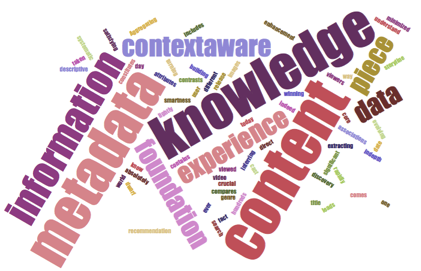By Todd Viegut, Kannuu CEO
The first television sets appeared circa 1950. In those days, with just a handful of broadcasters and limited video content, the printed, weekly TV Guide was all a consumer needed to quickly and easily find something to watch.
Today, ubiquitous broadband, the advent of IPTV, the proliferation of mobile devices, and the explosion of video content has transformed the video-viewing experience forever.
Consumers are inundated with unprecedented video-viewing choices — from user-generated content to stellar premium channels, OTT blockbusters to sports and staid, linear programming, and everything in between.
As such, it behooves service providers to make the user viewing discovery process as fast, easy and satisfying as possible.
This is no easy feat when one considers the amount of data involved.
In a relatively short period of time, myriad technological advancements have forced a seismic shift in the video-viewing landscape, and at the epicenter of this seismic shift is exponential data growth.
Metadata is gold
Each video viewed contains hundreds of different data attributes. Metadata is the in-depth descriptive information about the content piece that includes title, storyline, cast, genre, release date, images and more. A solid metadata repository is the key to gather, retain, and disseminate information and knowledge for the greater understanding of the content.
It is absolutely crucial here to understand that what constitutes ‘more’ in the world of metadata should in no way be minimized or taken lightly.
Metadata is indeed the the key to unlocking the value of the content itself. Extracting and inferring information out of that metadata, building content associations, comparisons and contrasts, conducting advanced, real-time analytics, working diligently to ensure metadata is complete, properly stored and always up to date — these processes, among others, give rise to an ever-increasing systematic ‘smartness’ about the video content.
Turning mountains of metadata into “actionable information” about the content itself is at the core of improving the video-viewing experience.
Big data is big business
As reported in Wired, Gartner projects that the volume of information is growing at an annual rate of 59% worldwide, and the number of organizations storing 1 petabyte of data has increased from 16 to 29% in the past three years.
According to WSJ, IDC projects spending on big-data analytics will increase from about $10 billion in 2012 to more than $32 billion in 2017. The 27% compound annual growth rate is far faster than the expected overall spending on corporate software, according to IDC.
Despite the increase in spending on big-data analytics, Gartner reports that through 2015, 85% of Fortune 500 organizations will be unable to exploit big data for competitive advantage.
It appears that too few companies are prepared for the challenges that come with big data, and for too long, big data projects have been more about technology than business outcomes.
Enter ‘context-aware’ discovery
Accurate, accessible, exhaustive, up-to-date, metadata-based “knowledge,” including social media, is pure gold to service providers new and old, provided they have the expertise, resources, and insight to innovate upon such knowledgeable data.
It stands to reason that the more that is known about the content itself as well as the consumer at the moment of selection, the better a system, especially the user interface, can be tailored to provide a superior discovery experience.
Delving into what constitutes ‘context’ is where the real magic happens.
Is the consumer male or female? Watching by himself/herself? Where (on what device and geo-location) and when (time of day, season ((sports)) is the consumer watching? What is the consumer’s viewing history? What might the consumer be in the mood for watching? What are his/hers special interests? What level of detail (show, actor, director information) does the consumer want? How much time does the consumer have in this viewing session? What are the consumer’s favorite channels (traditional programming, premium channels, OTT services, etc.)
The list of what constitutes ‘context’ goes on and on…
As the circle of ‘context’ expands, the amount of metadata for a context-aware discovery system grows as well, inviting a host of technical, backend challenges, with scalability, hybrid delivery (on premise and cloud), high-speed analytics, zero latency and 100% uptime topping the list.
Only those players with deep talent in metadata management, knowledge extraction, information architecture, user interface (UI), and user experience (UX) who develop solutions purpose built to wrestle big value from big metadata will survive and thrive in the years ahead.
Among the greatest hindrances for achieving context-aware discovery is developing a platform that efficiently and cost-effectively ties together multiple, disparate data sources, provides appropriate data cleansing and metadata schematics, integrates seamlessly with external applications, and automates processes for collecting, storing, reviewing, knowledge building and conducting gap analysis of metadata — all of which when integrated with advanced analytics, metric tracking and real-time reporting provides for true knowledge based context-aware discovery.
By the way, aren’t we simply talking about the term “findability”?
Much can be predicted about the future of video viewing, but one irrefutable fact is that service providers are competing fiercely and working at break-neck speed to create a more personalized consumer experience.
Metadata is the linchpin for personalizing media, and personalizing media translates directly into attracting and retaining more customers, achieving a sustainable, competitive edge, and realizing the full value of video assets.
